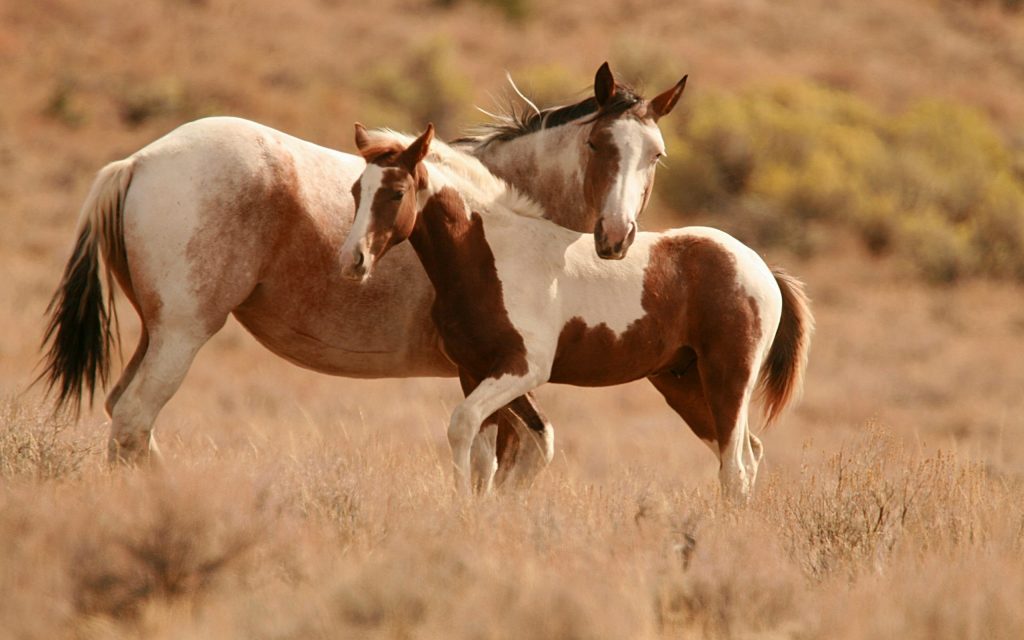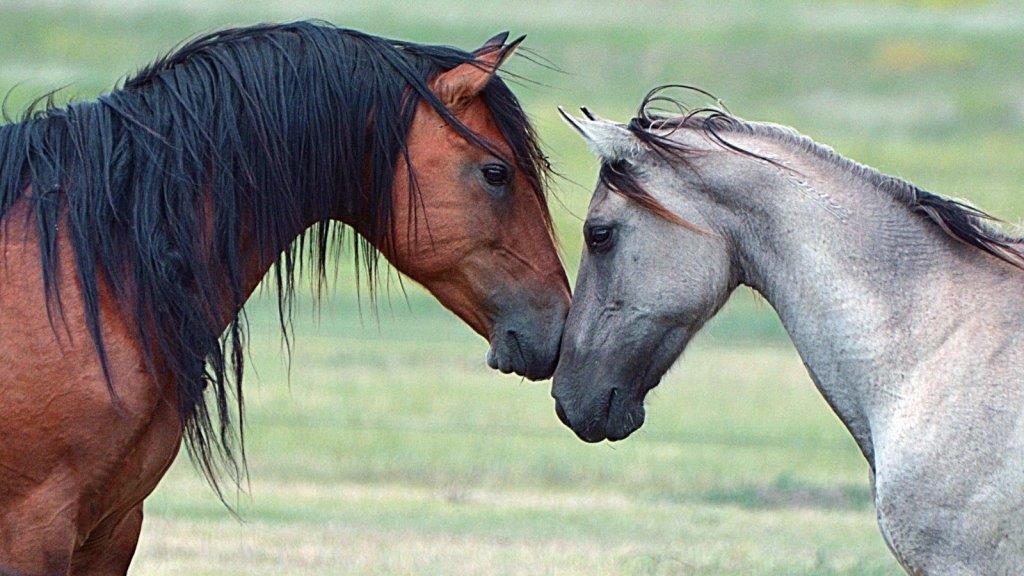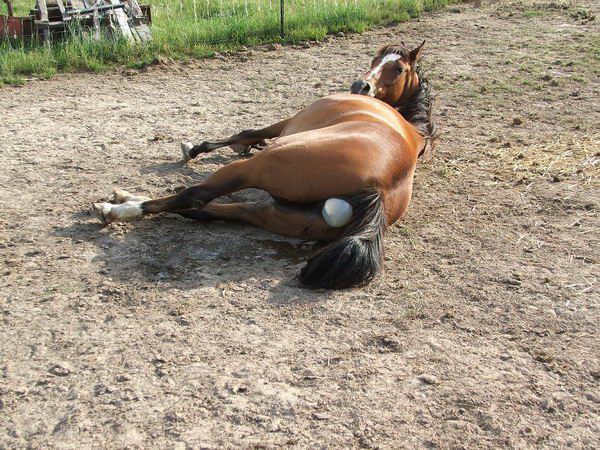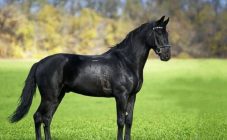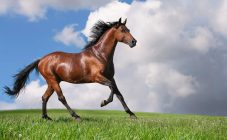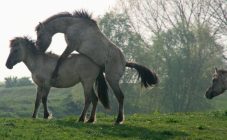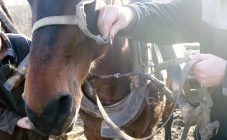Content:
Horse production has many nuances. In order for horses to be born purebred, it is necessary to choose the right individuals for mating. So how do you breed purebred and mixed breeds?
First of all, horses must be healthy, free from physical defects, and not aggressive. Also one of the main features to look out for is the weight of the animals. The mare should not be larger in weight than the stallion. If you do not adhere to this rule, the breed will be small. If you take a light mare and cross with a heavy, massive stallion, then the born foal will take only the best qualities from the parents.
Growth is also important. It is advisable to choose both a stallion and a mare of the same height. The purpose for which the breeder wants to get the offspring is also important. If you need a horse for riding, it doesn't make sense to choose a parent of a draft horse. For mating, a stallion is selected that has good external data. It is worth paying attention to the shape of the head, posture, massive chest, neck, muscularity of the legs, how trotting he is, etc.
The character of the parents will also influence the character of the future foal. So, if the father and mother were stubborn, aggressive, the foal will not be born obedient and affectionate, or you will have to spend a lot of time training it.
Breeding methods
Horse breeding can be done in different ways. It all depends on what exactly the breeder wants to get. There are such categories of crosses:
- Purebred crossing - means the mating of animals of the same breeds. Basically, this method is used when it is necessary to extend the genus of breeding horses.
- Linear crossing - means a group of animals of the same genus, but several generations. The data that the foal took for itself at birth determines its belonging to the genus of the mother or father. Mares that descend from the same ancestor are called brood mares. This method of crossing is used when it is necessary to improve the characteristics of the genus. The linear method is divided into subtypes:
- Uniform - selection of horses belonging to the same line or to the same genus;
- Diverse - the selection of horses is carried out according to the skills that are desirable in the future stallion.
- Related crossing - implies the mating of horses between which family ties are established. This can be a close relationship, for example, a father with a daughter, close relatives - a brother with a sister, and distant relatives - horses that have common ancestors along distant lines. With closely related reproduction, very often non-viable offspring or offspring with some developmental deviations occur.
- Interbreed method - implies getting hybrids. Animals of different breeds are taken for mating.
- Introductory pairing - it is used in cases when it is required to keep the best qualities in the breed and add good indicators of other breeds. Recently, it has become often used at Kursk and Samara stud farms.
- Industrial method - exists so that workhorses are born. Profitable when running a private equestrian business. Has established itself in the cultivation of the Zimovnikovskaya trotter breed.
- Absorption crossing method - required when it is necessary to improve any quality of the breed.With proper care and maintenance, from the 4th generation, you can get a stallion that will be close to the improving factory breed. This method has proven itself in the improvement of the Don Russian breed, the Oryol easy-harness trotter. Orlovets, by the way, has high performance indicators of offspring. Also, the Trakehner breed is improved by this method.
Horse mating
For mating, individuals are selected that are distinguished by high external indicators, good heredity and working capacity. A mare, in terms of indicators, can be inferior to a horse. This will not affect the litter. A month before the supposed insemination of a mare by a stallion, special vitamins are added to the feed. A week before mating, the horse's sperm is checked, and the mare's reproductive organs.
Breeding methods
There are several methods for inseminating horses. Insemination of horses is divided into:
- Natural;
- Artificial.
The natural method is divided into several subtypes:
- Grazing mating. In this process, one horse is selected to be the producer. About 15 females are released to him, among which there will be an alpha female. Stud stallions protect and look after their women. During the hunting period, they are able to fertilize several mares per day. This type of mating is very effective as around 12 mares become pregnant, which is of great benefit to the breeders.
- Cooking mating. It is rarely used. Basically, this type of mating is used when you need to fertilize aggressive and obstinate mares. Fertilization of horses takes place under the supervision of a mating instructor who helps the stallion and teaches him how to cover the mare. In the process, when the stallion covers the mare with the cooking method, there are several disadvantages, including:
- Risk of injury;
- Increased risk of contracting sexually transmitted infections;
- When the stallion covers the mare, the sex cycle can be skipped.
If it is not possible to mate the stud stallion with the obstinate mare, an artificial method of insemination of the mare will come to the rescue. The method involves the introduction of semen into the genitals of the mare by an artificial method. For this, a seed is selected. It can be of several types:
- Fresh... Most effective. Has the highest fertility rate. This species has one drawback. It is not suitable for long distance transportation. Insemination of mares is best done in the same room as the stud stallion.
- Chilled... A high percentage of fertility lasts for 30 hours. That is, the sperm must be delivered by courier no later than this time.
- Frozen... In horse breeding, this is considered the most expensive way of mare insemination. Sperm stored in this way can be functional for many years. It is frozen with liquid nitrogen. In tanks with liquid nitrogen, it can be transported to any corner of the world.
There is a certain percentage of horses whose seed is not suitable for refrigeration or freezing because it cannot tolerate a drop in temperature. At sub-zero temperatures, it loses all properties.
Transporting chilled or frozen semen can cause problems. At many airports, there is a veterinary control that may not let this biological material through, due to various infectious and venereal diseases that may be present in it. Quite often, biological material is sent back.
Pregnancy and childbirth
With proper care, pregnancies are easily tolerated in mares. Without ultrasound diagnostics and tests, the pregnancy of a mare is visible 6 months after insemination. A horse's gestation period ranges from 330-360 days.
A mare that is carrying a foal is fed a large amount of food, with admixtures of vitamin supplements in it. The mare is relieved of any hard work. They do not ride on it. Labor in most cases is quick. The process takes approximately 2 hours. The position in which it is most convenient to give birth is standing or lying on your side.
If the pregnancy proceeded without complications, then the horse will not need any additional assistance during labor. The umbilical cord breaks off by itself. When a foal is born, it should be applied to the mother's udder as soon as possible. You should also control that the foal stands on its own feet. After the foal has kissed the udder, you can carry out the necessary hygiene procedures for the mare and the newborn. The foal must be next to its mother for six months. Then you can add independence to him. The mare can start hard work 3 weeks after giving birth. During this period, her body is restored.
Basically, these animals can give birth to one cub. There are cases of twins, but this increases the risk of giving birth to weak or non-viable foals.
Care for a foal and his mother
A newborn foal can be wiped off with a towel or straw in cool weather. A foal's umbilical wound is treated three times on the first day of life. Processing takes place with a 3% iodine solution. This procedure will reduce the risk of contracting infectious diseases through the umbilical wound. Before the first application to the mare's udder, it should be wiped off. Within 3 hours, the mare excretes colostrum. It is very important to ensure that the foal receives it. If for a long time the foal cannot approach the udder on its own or does not find it, the newborn should be helped.
It is necessary to establish contact with this little animal from the very beginning of life. From the first days of life, the foal should see care and affection. Only then can he grow up to be kind, obedient and domestic.
How to breed horses, choose only the breeder. The main condition is the desire to get a foal with good performance and pedigree, capable of producing offspring further. How horses are mated can be suggested by experienced veterinarians and horse mating instructors.
